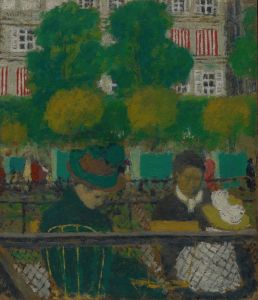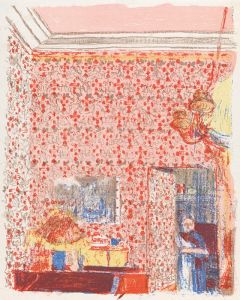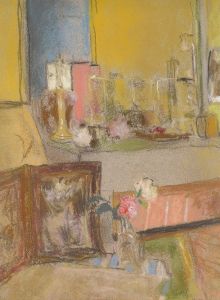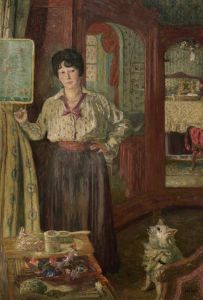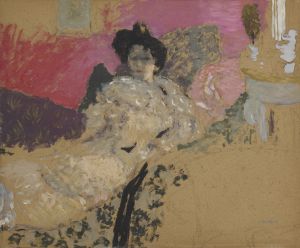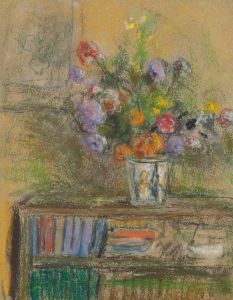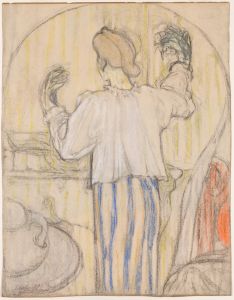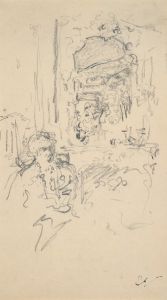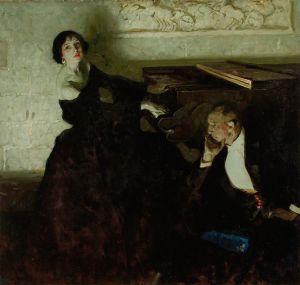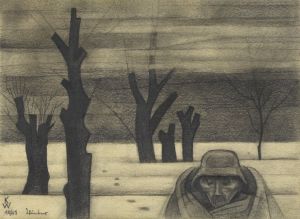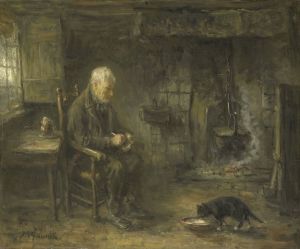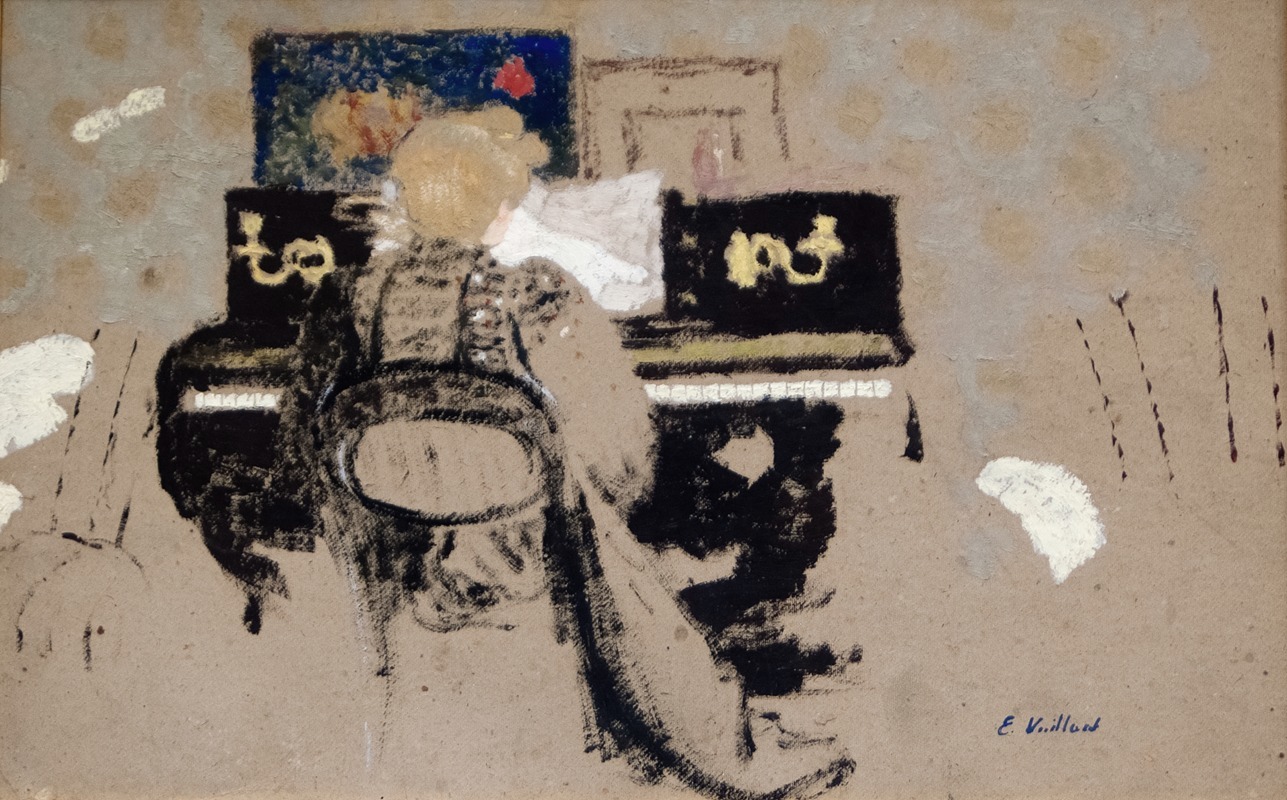
At the Piano
A hand-painted replica of Édouard Vuillard’s masterpiece At the Piano, meticulously crafted by professional artists to capture the true essence of the original. Each piece is created with museum-quality canvas and rare mineral pigments, carefully painted by experienced artists with delicate brushstrokes and rich, layered colors to perfectly recreate the texture of the original artwork. Unlike machine-printed reproductions, this hand-painted version brings the painting to life, infused with the artist’s emotions and skill in every stroke. Whether for personal collection or home decoration, it instantly elevates the artistic atmosphere of any space.
Édouard Vuillard's painting "At the Piano" is a notable work by the French painter, who was a prominent member of the Nabi group, an avant-garde movement in the late 19th century. Vuillard, known for his intimate domestic interiors and use of color and pattern, created "At the Piano" in 1896. This painting exemplifies his unique style and thematic focus on everyday life and the private sphere.
The painting depicts a domestic scene, a common subject in Vuillard's oeuvre. It shows a woman seated at a piano, absorbed in her music. The setting is likely a middle-class home, reflecting Vuillard's interest in capturing the nuances of bourgeois life. The composition is intimate, drawing the viewer into the personal space of the subject. Vuillard's use of color and pattern is particularly striking in this work. He employs a rich palette, with warm tones that create a cozy, inviting atmosphere. The patterns in the wallpaper and the woman's clothing are rendered with meticulous detail, showcasing Vuillard's skill in integrating decorative elements into his compositions.
Vuillard's technique in "At the Piano" reflects his broader artistic approach. He often used distemper, a type of paint made by mixing pigments with a binding agent, which allowed for a matte finish and subtle gradations of color. This technique contributes to the soft, harmonious quality of the painting. Vuillard's brushwork is delicate and precise, capturing the textures of the various surfaces in the room.
The painting is also notable for its composition. Vuillard often employed unconventional perspectives and cropping, influenced by Japanese prints and photography. In "At the Piano," the viewer's perspective is slightly elevated, offering a view of the room that feels both intimate and detached. This perspective, combined with the close framing of the scene, creates a sense of immediacy and presence.
"At the Piano" is part of Vuillard's broader exploration of the theme of music and its role in domestic life. Music was a recurring motif in his work, symbolizing both cultural refinement and personal expression. The painting captures a moment of quiet concentration, highlighting the woman's engagement with her music and the serene environment that surrounds her.
Vuillard's work, including "At the Piano," is often associated with the Symbolist movement, which emphasized the expression of emotions and ideas through symbolic imagery. While Vuillard's paintings are grounded in the real world, they often convey a sense of introspection and emotional depth, inviting viewers to contemplate the inner lives of his subjects.
Today, "At the Piano" is held in a private collection, but it has been exhibited in various retrospectives of Vuillard's work. The painting continues to be celebrated for its exquisite detail, masterful use of color, and the intimate glimpse it offers into the world of its subject. Vuillard's ability to transform everyday scenes into works of art that resonate with viewers on an emotional level is a testament to his skill and vision as an artist.







